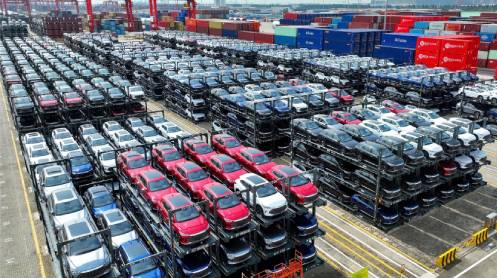Policymakers seek to curb circular debt, note challenges in way of sell-off
ISLAMABAD: As a major portion of Pakistan’s sovereign debt comprises loans of power sector, policymakers have stressed the importance of privatising state-owned electricity producers to rein in the runaway circular debt.
They voiced serious concerns that a considerable amount of foreign loans were outstanding against the government power producers (GPPs), which should be recovered from the payments proposed to be made to those generation companies (Gencos).
Sources in the Ministry of Energy (Power Division) pointed out that Gencos owed a large amount of debt and keeping that in view they should be considered for privatisation to ease the burden of power sector’s circular debt.
However, the Power Division told a recent meeting of the Economic Coordination Committee (ECC) that there were many challenges that were impeding the privatisation of Gencos.
The meeting was informed that the operation and maintenance of Nandipur Power Plant had been outsourced to a Chinese company, however, Guddu Power Plant was essential for stability of the system.
Read PM inaugurates 1,263MW power plant in Punjab
The Economic Affairs Division informed meeting participants that a considerable amount of foreign loans, which had been re-lent to the state-owned power producers, was outstanding, which should be recovered from the proposed payments.
Policymakers were of the view that as a major portion of the sovereign debt comprised the loans extended to the power sector, the Power Division should draw up a comprehensive plan to cope with the imbroglio.
The ECC directed the Power Division to come up with a comprehensive presentation on the issues related to the power sector along with viable recommendations.
The meeting was briefed that the Power Division had submitted a summary to the ECC on March 30, 2022 for seeking approval for the clearance of past liabilities amounting to Rs444.5 billion of the government-owned power plants.
A supplementary grant of Rs182.465 billion for the Pakistan Atomic Energy Commission, Water and Power Development Authority (Wapda) and National Power Parks Management Company Limited (NPPMCL), as per the payment mechanism already approved for the independent power producers (IPPs), was accordingly approved and subsequently released.
In the current financial year 2023-24, the government has allocated a lump sum subsidy of Rs262.075 billion for the power sector.
In this regard, the Finance Division had been taken on board. It was agreed that out of the Rs262 billion, an amount of Rs131.035 billion may be released in the second quarter of FY24 and the remaining Rs131.040 billion in the third quarter.
The Power Division requested the ECC to approve a technical supplementary grant of Rs252.075 billion under the investment category and release it for injection into the power distribution companies.
Out of the second quarter payment of Rs131.035 billion, Rs26.782 billion was required to be given to Genco-II, Rs2.965 billion to Genco-III, Rs83.638 billion to Wapda, Rs16.015 billion to the Quaid-e-Azam Thermal Power Plant (based on re-gasified liquefied natural gas – RLNG) and Rs1.635 billion to the Quaid-e-Azam Solar Power Plant.
For the third quarter payment of Rs131.040 billion, Rs26.787 billion was proposed to be given to Genco-II, Rs2.95 billion to Genco-III, Rs83.638 billion to Wapda, Rs16.015 billion to the Quaid-e-Azam Thermal Power Plant (RLNG) and Rs1.635 billion to the Quaid-e-Azam Solar Power Plant.
The ECC considered a summary submitted by the Power Division titled “Settlement of payables to government-owned power plants at par with IPPs – release of Rs262.075 billion to public sector power plants through TSG”, and approved the proposals.
It gave directives that while utilising the funds, GPPs would accord priority to the clearance of foreign loans and cash development loans. It told the Power Division to formulate a comprehensive plan and make a presentation on the power sector issues, including its outstanding liabilities, with viable recommendations.







